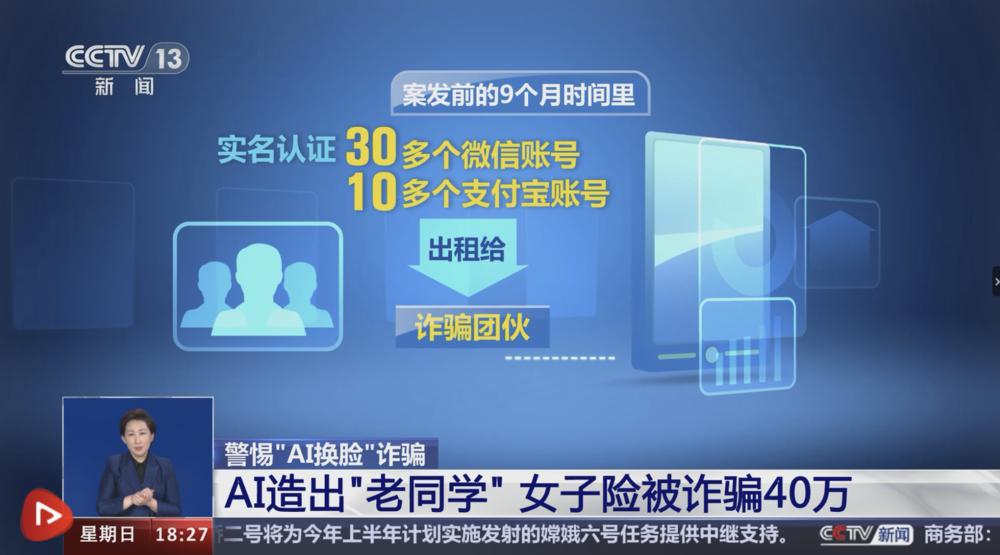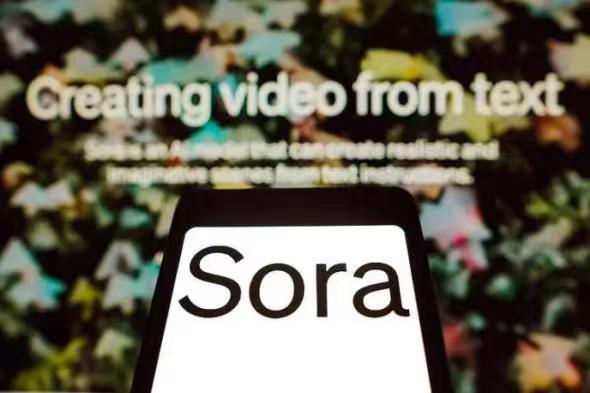
Recently, the Hong Kong Police revealed a case where an employee participated in a "multi-person video conference" initiated by the CFO of the headquarters. As instructed, the employee transferred 200 million Hong Kong dollars to five local bank accounts, only to realize later that it was a scam. Police investigations uncovered that the employee was the only "real person" in the meeting, while others were fraudsters using "AI face-swapping" technology.

Earlier in 2024, the sudden emergence of Sora has garnered global attention. Unscrupulous individuals take advantage of "AI face-swapping" technology to impersonate people's relatives, superiors, or public officials to commit fraud, which is extremely difficult to guard against.
On August 10th, 2023, a spokesperson from the Ministry of Public Security announced during a press conference that 79 cases of "AI face-swapping" scams had been solved, resulting in the apprehension of 515 criminal suspects.

Lu Hui, the Director of the Cyberspace Institute of Advanced Technology at Guangzhou University, told reporters that compared to previous AI video generators, Sora, which debuted early in 2024, is more intelligent. It can generate highly realistic images and videos of different people in various scenes directly from a piece of text. "The accessibility of generative AI is increasing, making it wide open to abuse," Lu Hui pointed out. While AI's iterative upgrades have made our lives easier, they have also made it easier for criminals to engage in remote video fraud.
How can we guard against "AI face-swapping" scams?
Some suggested that during video calls, we could ask the other person to wave their hand to determine whether they are a real person or a fraudster using "AI face-swapping." In response, Lu Hui stated that waving could interfere with facial data, causing some abnormality to the face in the video. "However, this can quickly be remedied through technological means." He suggested using certain content that only you and the other party understand for verification.

According to experts, the most crucial aspect is to cultivate an awareness of fraud prevention. "Criminals are after nothing but money, so we must remain vigilant when faced with money-related requests."
Experts also suggest citizens be cautious when sharing photos and videos containing their clear facial features on social media, as these images may be used for facial recognition validation or other illegal purposes after being generated. Furthermore, two categories of sensitive information should be carefully protected: our biological features such as faces, irises, voices, fingerprints, and critical personal information like ID card numbers, bank account numbers, and medical examination reports.
Source:Yangcheng Evening News
香港职员遭“AI换脸”诈骗2亿港币,专家支招如何防范
近日,中国香港警方披露了这样一个案例:一名职员参加总部首席财务官发起的“多人视频会议”,并按要求将2亿港元转账到5个本地银行账户,其后向总部查询方知受骗。警方调查发现,会议中只有他一个“真人”,其他都是“AI换脸”后的诈骗人员。
今年年初,Sora的横空出世引起全球关注。一些不法分子利用这类技术,通过“AI换脸”后冒充亲友、上司、公职人员进行诈骗,让人防不胜防。
去年8月10日,公安部相关负责人在新闻发布会上表示,当时已破获“AI换脸”案件79起,抓获犯罪嫌疑人515名……
广州大学网络空间先进技术研究院院长鲁辉告诉记者,相比过去的视频生成式AI工具,今年年初横空出世的Sora更加智能,可以直接用文本生成不同的人在不同场景里非常逼真的图像、视频。“使用门槛越来越低,使得生成式AI更容易被滥用。”鲁辉指出,作为一把双刃剑,AI技术的迭代升级,让人们生活变得便利的同时,也让犯罪分子实施远程视频诈骗变得更为轻松。
普通民众如何防范“AI换脸”诈骗?
有网友提出,视频通话时,可以让对方在脸部挥手来鉴别对方是真人还是“AI换脸”后的骗子。对此,鲁辉称,挥手过程可造成面部数据的干扰,使人脸出现一些异常情况。“但这可能很快就被技术手段修正。”他认为,可通过设置一些只有你和对方知道的内容来辨别。
专家们认为,最重要的是要树立反诈防范意识。“犯罪分子无非是要钱,遇到要钱的,就要提高警惕!”
专家特别提醒,市民在社交媒体分享含有清晰人脸的照片和视频时,一定要谨慎,因为这些照片可能会被生成之后用于人脸识别验证,或者其他一些非法目的。此外,一定要保护好两类敏感信息:我们的人脸、虹膜、声纹、指纹等生物特征信息;身份证号、银行卡号、体检报告等重要个人信息。
文、视频剪辑 |记者 黎秋玲
图、视频拍摄 |记者 何昱
翻译 | 洪婷
-
China regains top spot as Thailand's largest tourist source
2024-03-25 23:17:18 -
Guangzhou Marathon named an influential event of Chinese Athletics Association in 2023
2024-03-24 23:49:21 -
Why are Chinese horse-face skirts popular among young people?
2024-03-24 23:49:31 -
Video | China to regain its status as Queensland's top international visitor market
2024-03-24 23:50:18






